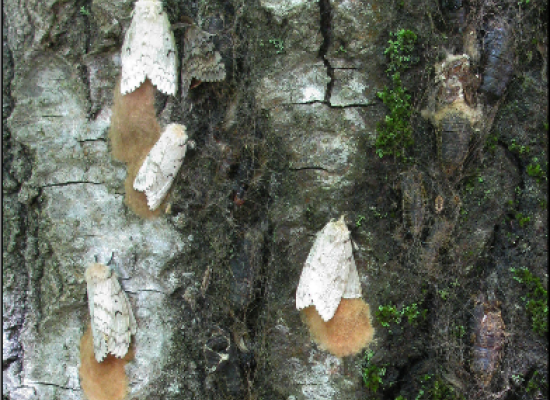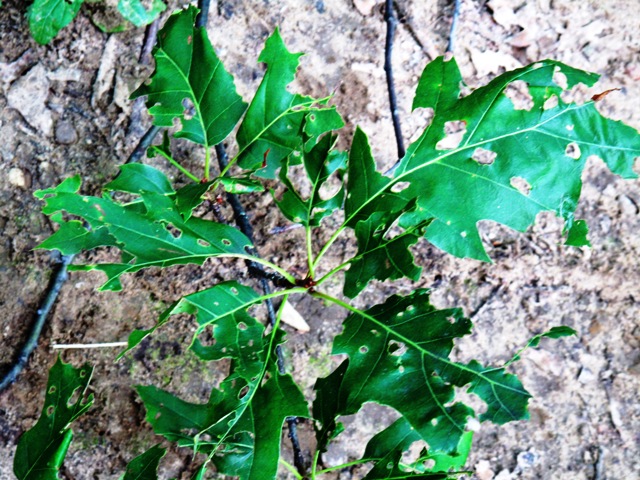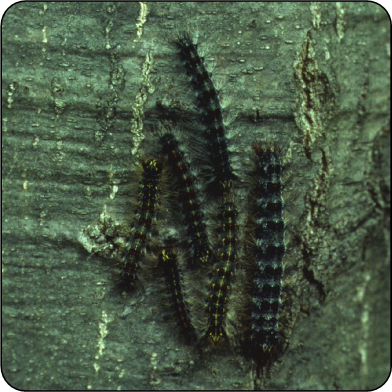
Gypsy Moth Information
From the Ontario’s Invading Species Awareness Program;
The Gypsy moth is an insect native to Europe and Asia that feed on a wide variety of tree leaves and has been severely weakening trees across North America. The Gypsy moth is considered an invasive species and was introduced to North America in the late 1860’s near Boston and has spread over the past century. The first detection of gypsy moths in Ontario occurred in 1969; however, widespread defoliation did not occur until 1981. Despite the successful use of insect predators, as well as fungal and viral controls, gypsy moth populations do occasionally reach outbreak levels and continue to expand their range.
 Gypsy moths can be found throughout southern Canada, across the eastern and central United States, and most of the western states. Populations have been found in southern Ontario, New Brunswick, Nova Scotia and British Columbia. Each population varies annually and fluctuates with local conditions.
Gypsy moths can be found throughout southern Canada, across the eastern and central United States, and most of the western states. Populations have been found in southern Ontario, New Brunswick, Nova Scotia and British Columbia. Each population varies annually and fluctuates with local conditions.
In Ontario, Gypsy moths can commonly be found in host species ranging from oak (Quercus), birch and aspen (populus) in the north, to various hardwoods such as sugar maple (Acer saccharum) American beech (Fagus grandifolia) and softwoods such as eastern white pine (Pinus strobus) and Colorado blue spruce (Picea pungens) in southern Ontario.
 In Ontario, Gypsy moth outbreaks can occur every 7 to 10 years. The larvae chew holes in leaves or devour the entire leaves of a host tree leading to the defoliation of a forest area. In urban areas, egg masses can be controlled by removing and burning or soaking with a soap and water mixture. A band of burlap or other cloth product wrapped around the trunk will provide a place for caterpillars to hide during the heat of the day. These bands can be checked regularly and the caterpillars can be scrapped into a container of soapy water. Additionally, keeping trees healthy will help to ward off attacks and increase survival of the host tree from damage caused by the larvae. In our rural and natural areas, good forestry practices will ensure healthier trees that are better suited to withstand the stresses of defoliation.
In Ontario, Gypsy moth outbreaks can occur every 7 to 10 years. The larvae chew holes in leaves or devour the entire leaves of a host tree leading to the defoliation of a forest area. In urban areas, egg masses can be controlled by removing and burning or soaking with a soap and water mixture. A band of burlap or other cloth product wrapped around the trunk will provide a place for caterpillars to hide during the heat of the day. These bands can be checked regularly and the caterpillars can be scrapped into a container of soapy water. Additionally, keeping trees healthy will help to ward off attacks and increase survival of the host tree from damage caused by the larvae. In our rural and natural areas, good forestry practices will ensure healthier trees that are better suited to withstand the stresses of defoliation.
Should you be interested in learning more to mitigate damage to your property caused by the Gypsy moth you can access information from links below. Alternatively, please contact Ministry of Natural Resources below.
- http://www.invadingspecies.com/gypsy-moth/
- https://www.ontario.ca/page/gypsy-moth
- https://www.ontario.ca/feedback/contact-us?id=26930&nid=47048
